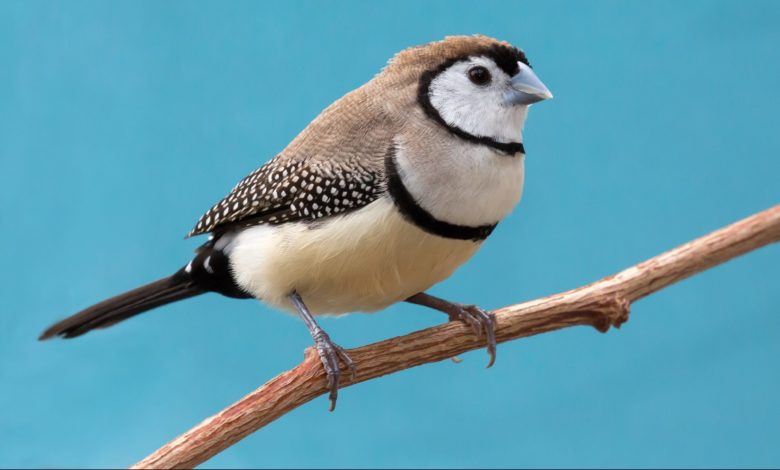Avian – Owl Finches

Register to get 1 more free article
Reveal the article below by registering for our email newsletter.
Want unlimited access? View Plans
Already have an account? Sign in
Bird keeping is a very fulfilling hobby and there is a species suited to almost every keeper. We have the large and small Parrots for those of us who require an interactive social bird to live and laugh with, to songbirds such as Canaries for those that wish to sweeten the home with colour and song. We have the ‘soft-bills’, who largely do best in large flights, both displaying high levels of colouration and a real sense of the ‘tropics’.
We then have the Finches and Waxbills, for those who wish to keep small birds that can be easily maintained, reproduced fairly freely and within vibrant collections maintained within the modern bird room. Within the classification of ‘Finches and Waxbills’ we find a whole host of species from all over the world, many bearing song, some displaying outstanding colouration and others being of a genial nature and able to live and breed in groups.
Australia has provided aviculture with a number of species over a long period of time, some of which can now almost be classed as domesticated. These species include the ever-popular Zebra Finch and gouldian Finch. Australian grass Finches represent a wide and robust range of species, mostly all falling into the category of being ‘easy to keep’.
The species that I wish to look at this month is another one of these fine Australian birds, a striking but quite delicate looking little grass Finch, but with a big personality and a quite endearing little song. The Owl Finch (Taeniopygia bichenovii), known by the common names of ‘double barred Finch’ or ‘Bicheno’ Finch originates in North and Eastern Australia. The species is split into two geographically placed subspecies, these being the nominate species or ‘white rumped’ which are found over the eastern areas, and the ‘black rumped’ occurring over the north and into the Kimberly regions.
The bird is of a similar size to the commonly kept Zebra Finch but is altogether not quite as rotund, it has a rather delicate look about it, a quite fragile and powder-soft appearance. This apparent fragility is no indicator that the bird is hard to keep however, if certain basic welfare guidelines are adhered to. The Owl Finch is actually quite robust, living in social groups and tolerating a range of other passive species in their living space. The birds live over a wide range and succeed within most habitat types.
They can be found in quite arid shrubland ecosystems in which they will flock with other species looking for seeding grasses and inverts. They can be found over prime agricultural land and prime grassed areas, they are also found in quite warm and humid environments. The only common feature to all of these habitats are that they are all rather warm. It is this warmth that remains, vital to their ongoing welfare, in spite of 50 years of captive breeding. In fact, when allowed to chill, especially when in a damp draft they will suffer quickly and may not recover even if moved to warmth.
This is largely a monomorphic species with only the very experienced keeper able to gather an idea of the sex of a bird by the saturation of white over the face and by looking at the size and shape of the bird. The only positive way to sex these birds is through the presence of song. Only the cock bird will sing, the only true indicator, other than DNA sexing.
The bird in appearance is quite different from other grass Finches, as its colouration is almost solely black on white and soft grey/beiges. The beak is of a ‘steely blue/grey’, built of the typical grass Finch wedge shape. The eyes are very round and glossy black. The face is an almost perfect circle of white giving it the common name ‘Owl Finch’. This white is broken by a circle of jet black that encircles the white disc around the face. This proceeds from the chin, up around the ears and over the top of the head, where it widens slightly into a thin black cap then graduates into the grey/faun base colour that extends back down over the back and the top of the wings.
The breast is pure white banded in black around the breast from underneath the shoulder line. The belly and around the rump is white graduating into a light faun around and under the bird. The wings themselves are speckled with tiny white dots, as ‘starbursts’ around the lower wing. There are delicate, tiny crescent shaped bars at the upper wing. The leg feathers are white over steel grey legs and the tail is black. It is almost a comically coloured ‘painted’ bird of fine lines.
The Owl Finch is very easy to feed and prone to obesity, it takes readily to good quality Finch seed mix. This can be expanded upon with the addition of other small seeds, conditioning seeds and mixes for African Waxbills, green foods, sprouting seeds, some fruits and suitable livefoods, especially when nesting. Wingless fruit flies are of great value and will be collected in large numbers if offered.
Small calciworms can also be used, this is a perfectly balanced and harmless livefood that is sadly underused in the UK. A good mineral grit should always be available as should an iodine block and cuttlefish bone. As with Gouldian Finches’ small pieces of charcoal are also of use. A good full-spectrum mineral powder can be added lightly to seeds in order to aid bone health, reproductive function and to help maintain good organ function.
Owl Finches are also very partial to egg food and it will be taken all year long. Premade egg food can be used as a percentage within a full and varied diet and of course become very valuable when chicks are being reared.
Full-spectrum+UV-B lighting will help greatly especially if the birds are maintained in the bird room at any time. This will help in a number of ways, including allowing the production of natural and self-regulated vitamin D3. In the correct quantity, vitamin D3 ensures the production and maintenance of healthy bones and eggs. The correct provision of UV is of great importance when seeking to breed the monomorphic species outside the reach of full spectrum daylight.
Whether these birds are to be kept in large breeding cages, indoor flights or protected aviaries they will benefit from both natural perching and areas of decoration in order to find resting places. Indoor flights can be decorated with potted tall grasses and a network of branches. This is a hungry bird and one that should be encouraged to fly whenever possible, thus increasing its fitness while it does so. Freshwater should always be available.
This is a peaceful bird that can be maintained with similar species. Care should be given when kept with other grass Finches as resulting hybrids are not uncommon at all. A good sized breeding cage can be used within the setting of the bird room for a pair or two. A small group of birds can also be kept in a modest flight in the bird room. They can be kept outside if suitably protected throughout the warmer months but will benefit greatly from being removed to the bird room during cooler, damper months. In this way, and when supplied with a few suitable nesting areas, the birds will pair off quickly and start the nest building process.
The cock bird will start to sing at first, he will then start to perform an endearing dance towards the hen. This is a species that will happily use premade wicker baskets but also build its own nest. In this case dried grasses should be provided alongside clean nesting materials. They will also collect feathers to line the nest, clean feathers can be provided to help them. Once a pair bond has been formed it may be maintained for life, as such, pairs can be easily fitted with coloured rings to ensure accurate pairing every season even if separated for periods of rest.
Between three to five eggs will be laid in the nest incubation usually starting after the third or fourth egg has been laid. Hatching can start within 11-13 days after the start of settled incubation. Chicks can fledge between weeks three and four and will be largely independent by week seven. The young grow quickly and resemble scruffy, beige versions of the parents.
They will then moult quite quickly with their colours improving greatly. It is not uncommon for the parent birds to be caring for another brood before the first nest has been properly weaned. In this case, young birds from previous nests have been known to help out with nesting duties.
Young birds should ideally be maintained away from the parents until they are 10 months old or so and without access to a nest. A nice protected breeding cage will do the trick here. This is a species with a tendency to nest even when far too young. This, if allowed, will take a huge toll on the young hens in later life. If disaster strikes in the nest or parents reject a clutch, the eggs and/or young can be fostered by Zebra Finches or Bengalese Finches.
The Owl Finch is yet another stunning Australian grass Finch. It is peaceful by nature, with a pleasant song and is well marked. This species can become a welcome companion pair of caged breeding birds in the home collections can be maintained in the bird room or even in suitable garden aviaries. They are not quite as easy as Zebra Finches, they can represent the ‘next step up’ in the journey that we all take as we gather experience in this wonderful hobby.
Pairs can be found to retail for under £100pr usually, sometimes a little less than this depending on the numbers available. Keep them out of chills and damp drafts, feed them well and you can have another species that will both thrive and bring delight for a number of years.







